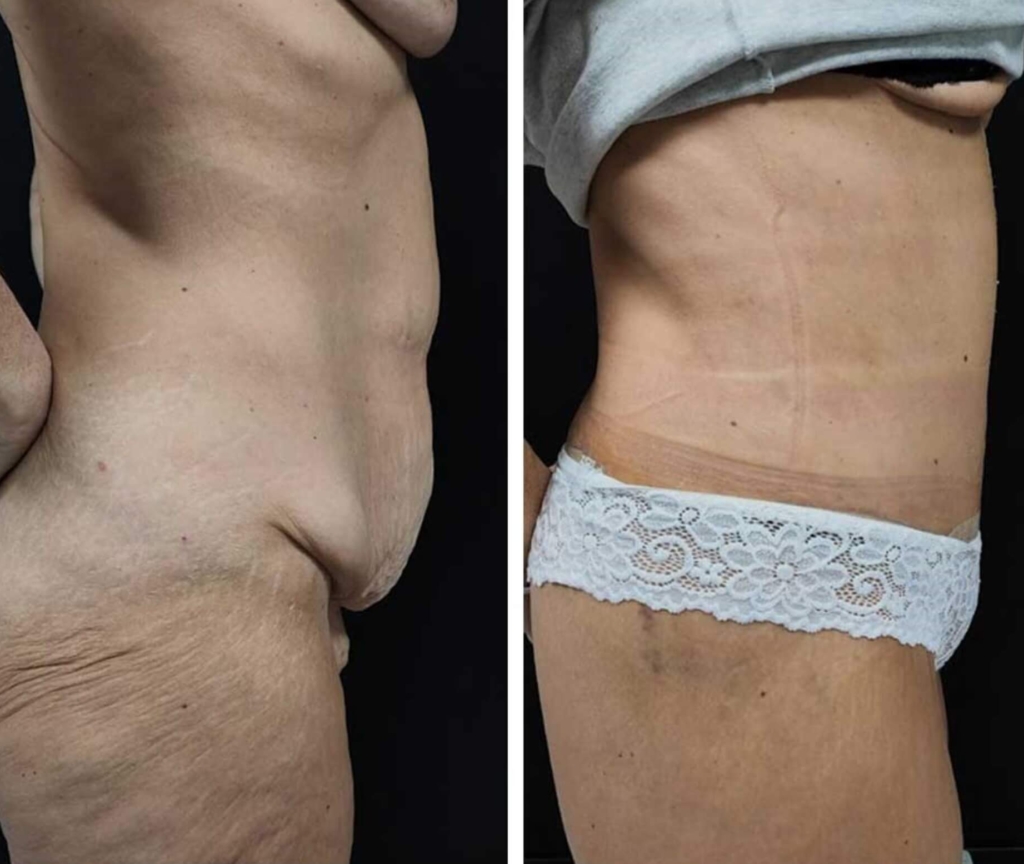For many people, the appearance of their tummy is a source of dissatisfaction. Despite their best efforts with diet and exercise, achieving a flat and firm midsection can seem impossible. This is especially true for those who have undergone pregnancies, experienced weight fluctuations, or have a genetic predisposition to store fat in the abdominal area.
In such cases, abdominoplasty, commonly known as a tummy tuck, can be a solution. This surgical procedure removes excess skin and tissue from the abdominal area, resulting in a smoother and flatter tummy.
During a tummy tuck procedure, the surgeon will make an incision along the pubic area, running from hip to hip (or sometimes from the navel down). The excess skin and fat will then be pulled down and removed. Throughout the tummy tuck procedure, the surgeon will leave the navel intact and attached to the abdominal wall.
In some cases, the procedure may also involve liposuction to remove additional fat in the abdominal area. After the tummy tuck surgery is complete, you will have a scar across the lower abdomen, which will typically fade over time.
Patients are typically advised to stop smoking and avoid taking certain medications that may increase the risk of bleeding or interfere with anesthesia. The surgeon will also provide instructions on proper nutrition and hydration leading up to the surgery.
It's important to disclose any medical conditions or allergies to medications during the preoperative consultation.
Following the surgeon’s guidelines can help minimize complications and improve outcomes.
Immediately after the tummy tuck operation, there is discomfort, swelling and bruising. Temporary drainage tubes may be left in the body after the operation to help wound fluid to drain out.
It is important to follow the surgeon's instructions on pain management, wound care, and physical activity restrictions. Patients are typically advised to rest and avoid strenuous activities for several weeks following the procedure.
Compression garments should be worn to reduce swelling and support the abdomen during the healing process.
Following a healthy diet and lifestyle habits can also promote healing and improve outcomes.
The recovery period can vary depending on the individual and the extent of the procedure, but most patients can expect to resume normal activities within several weeks to a few months.
Like any surgical procedure, tummy tuck surgery carries risks and potential complications. These may include bleeding, infection, blood clots, anesthesia complications, scarring, numbness, and skin discoloration.
More serious complications, though rare, may include pulmonary embolism, cardiac events, or adverse reactions to anesthesia.
It's important to discuss the risks and benefits of tummy tuck surgery with a qualified surgeon and to carefully follow pre and postoperative instructions to minimize the risks of complications.
- New Me Health

